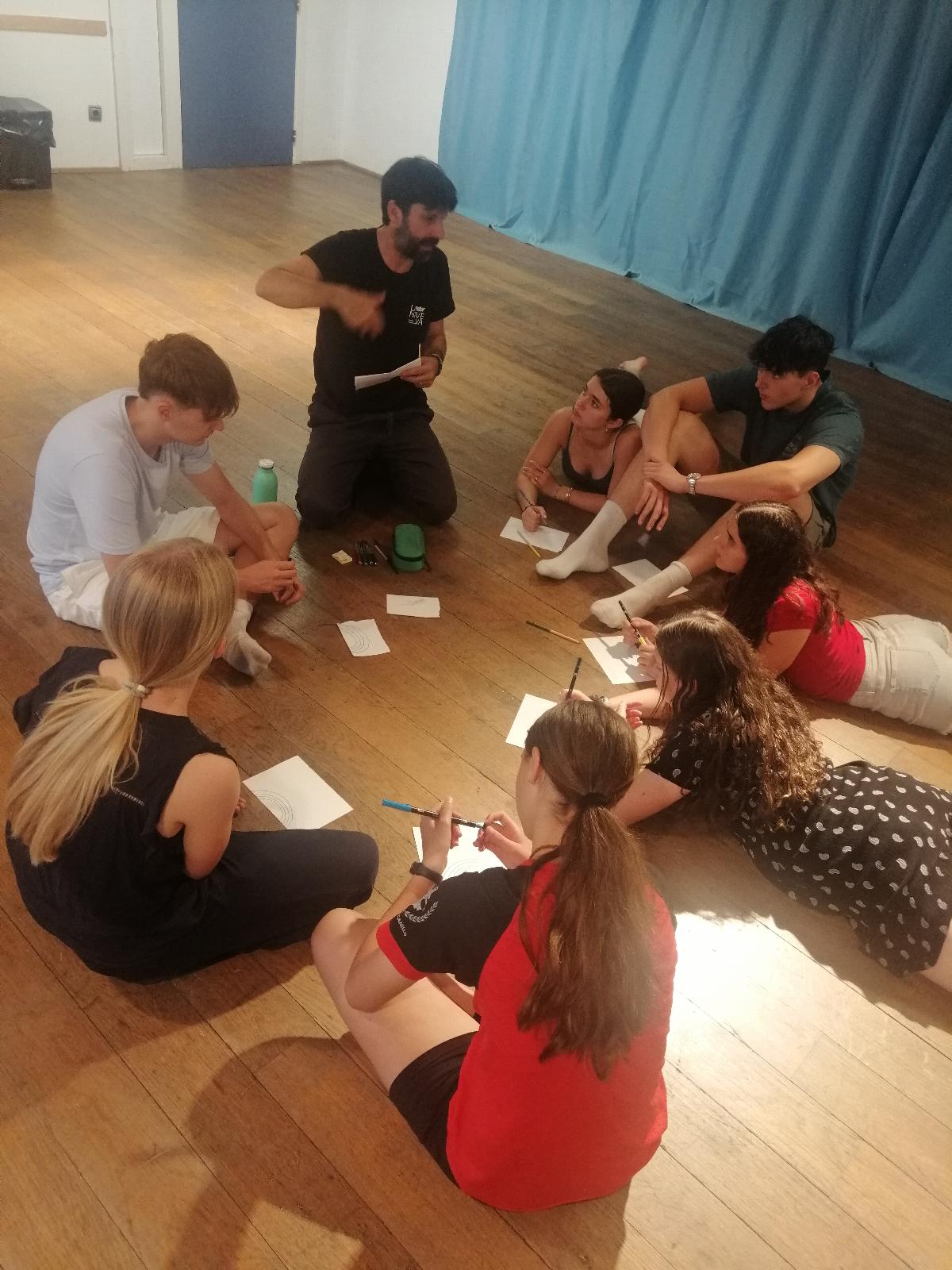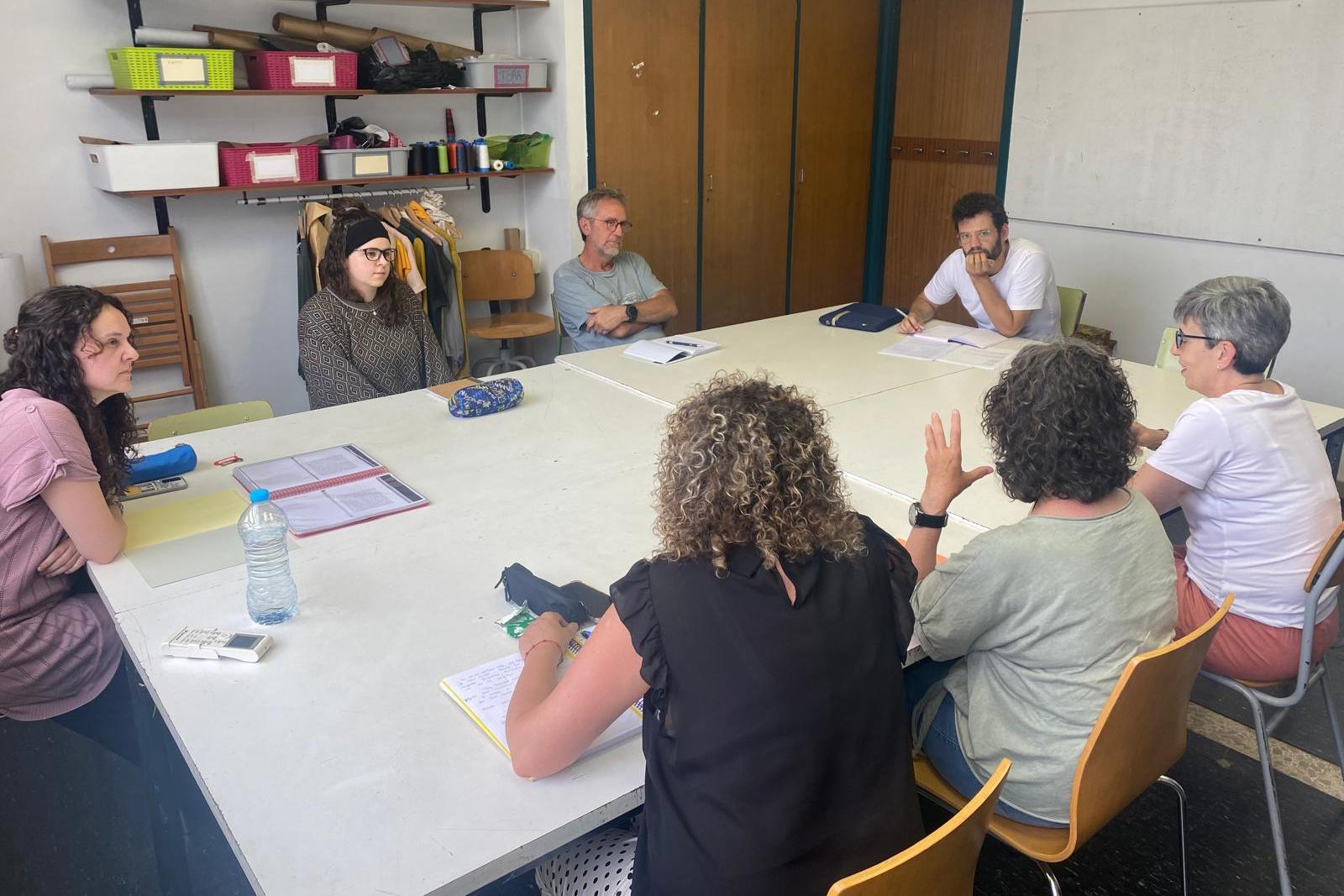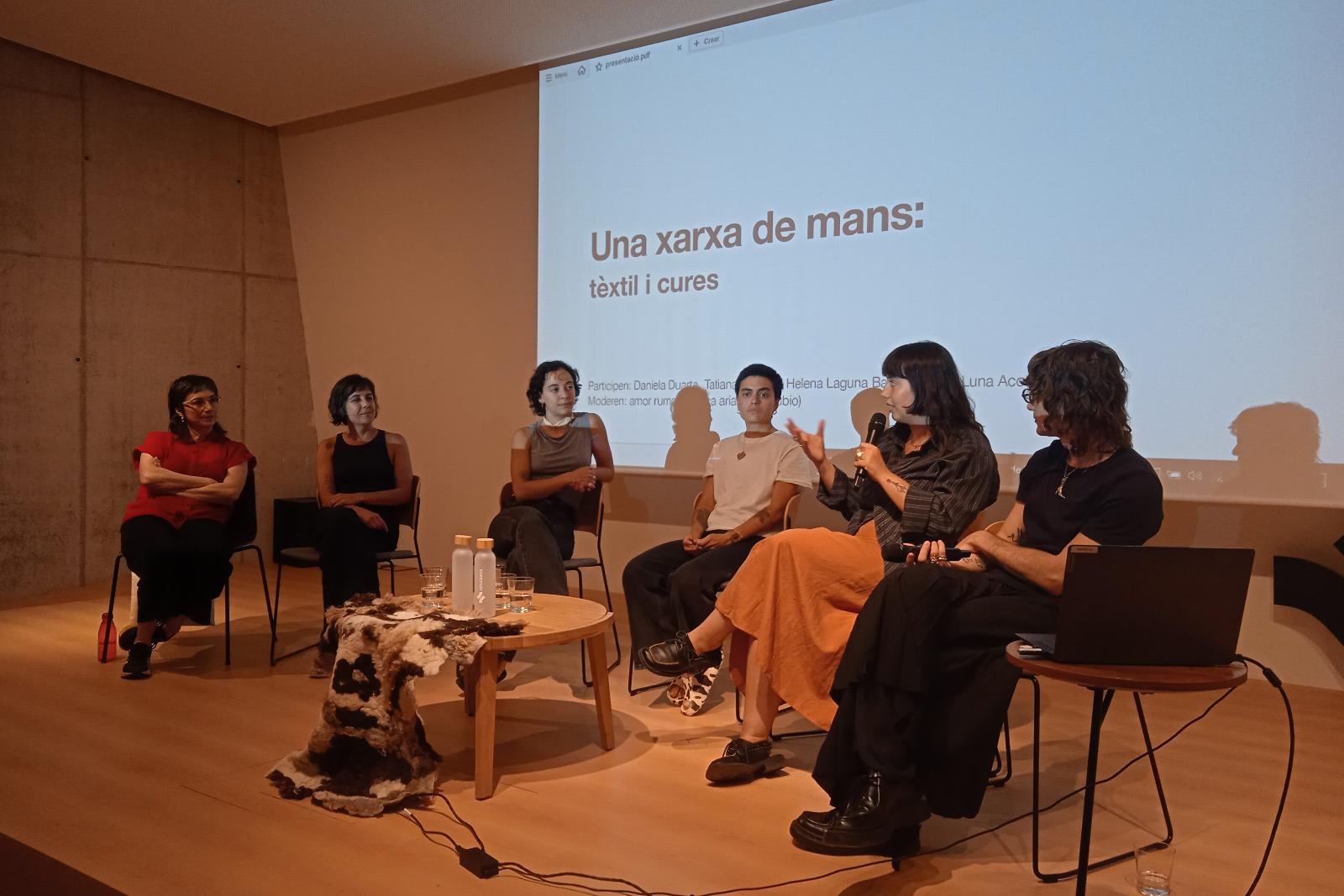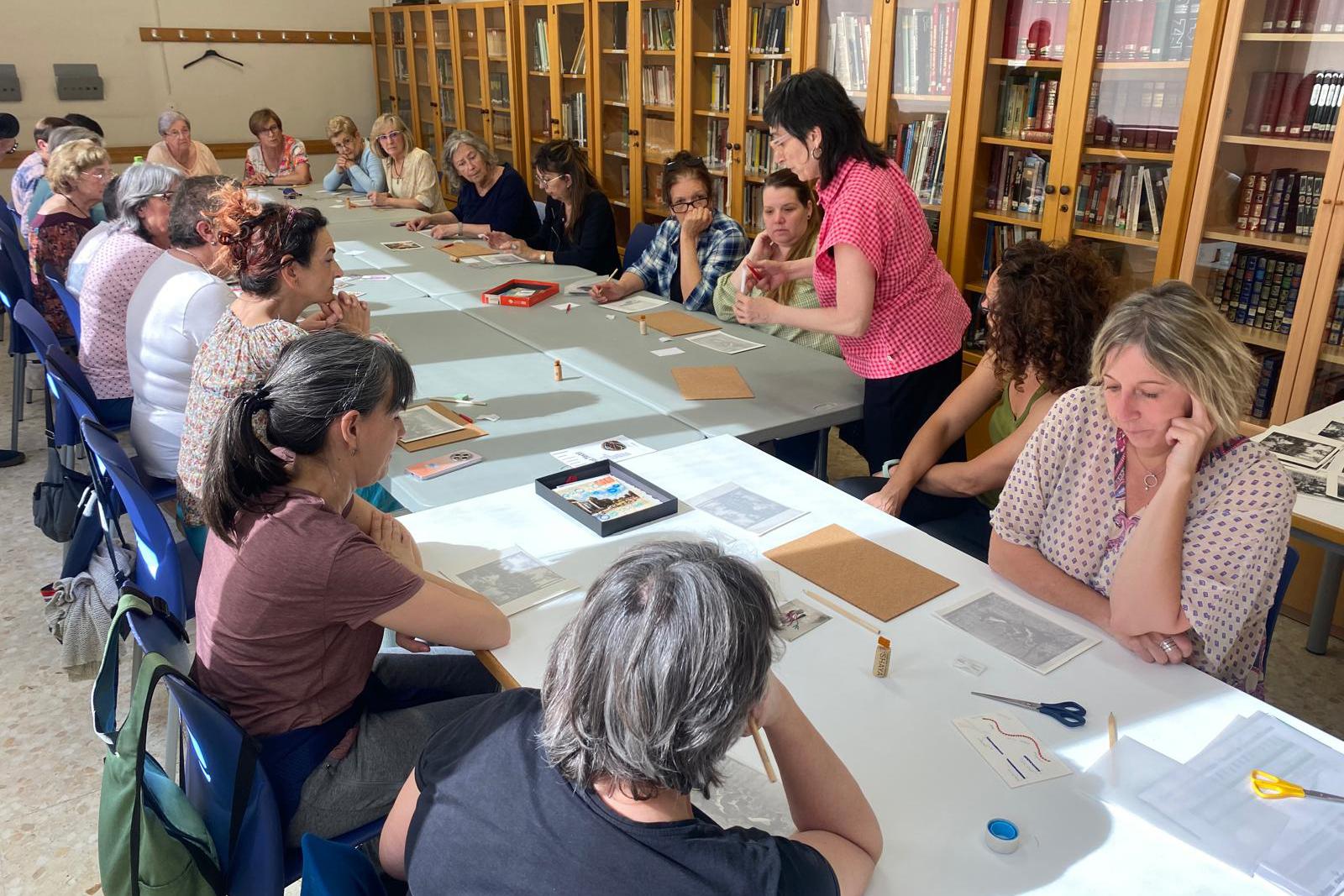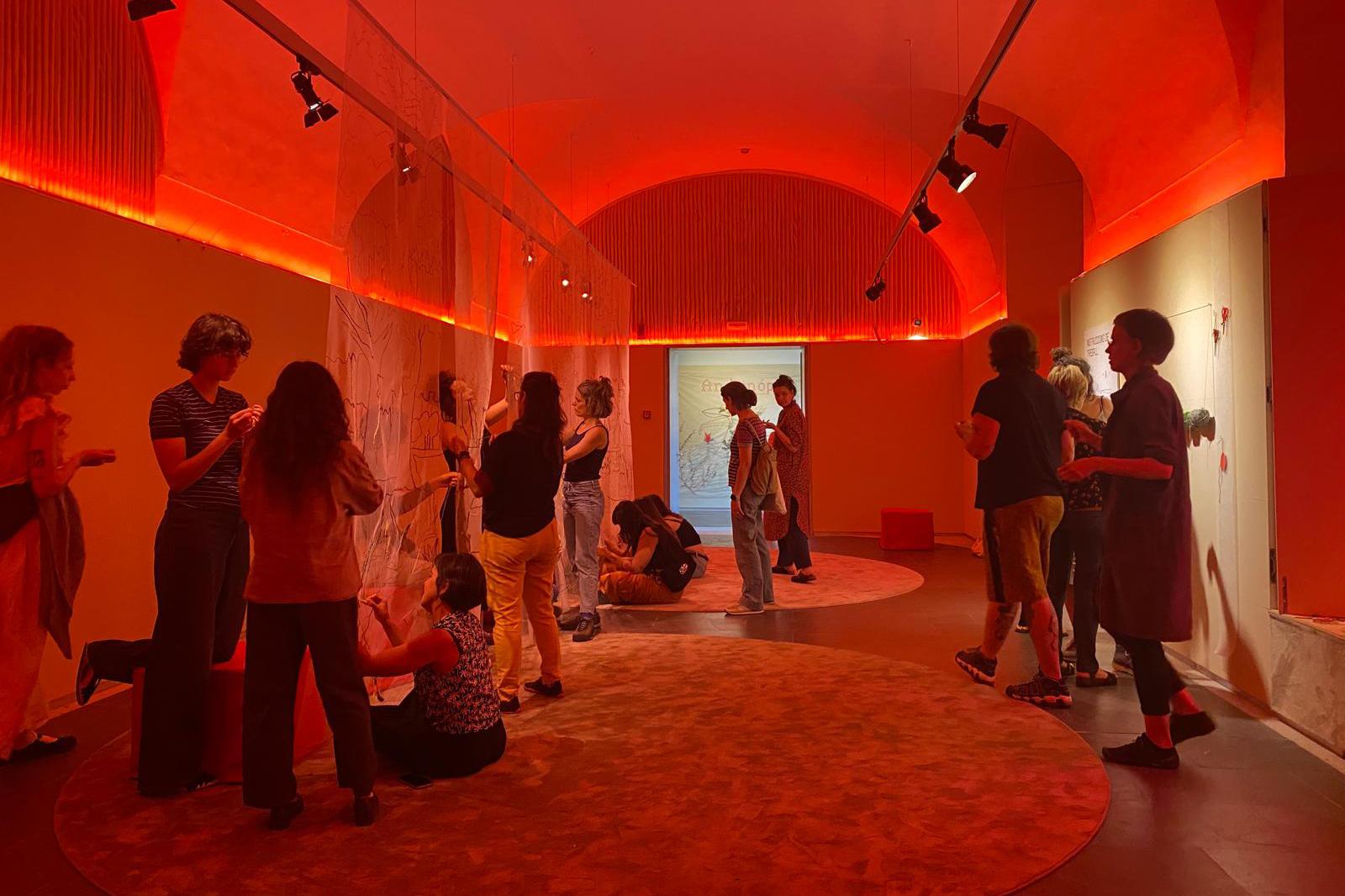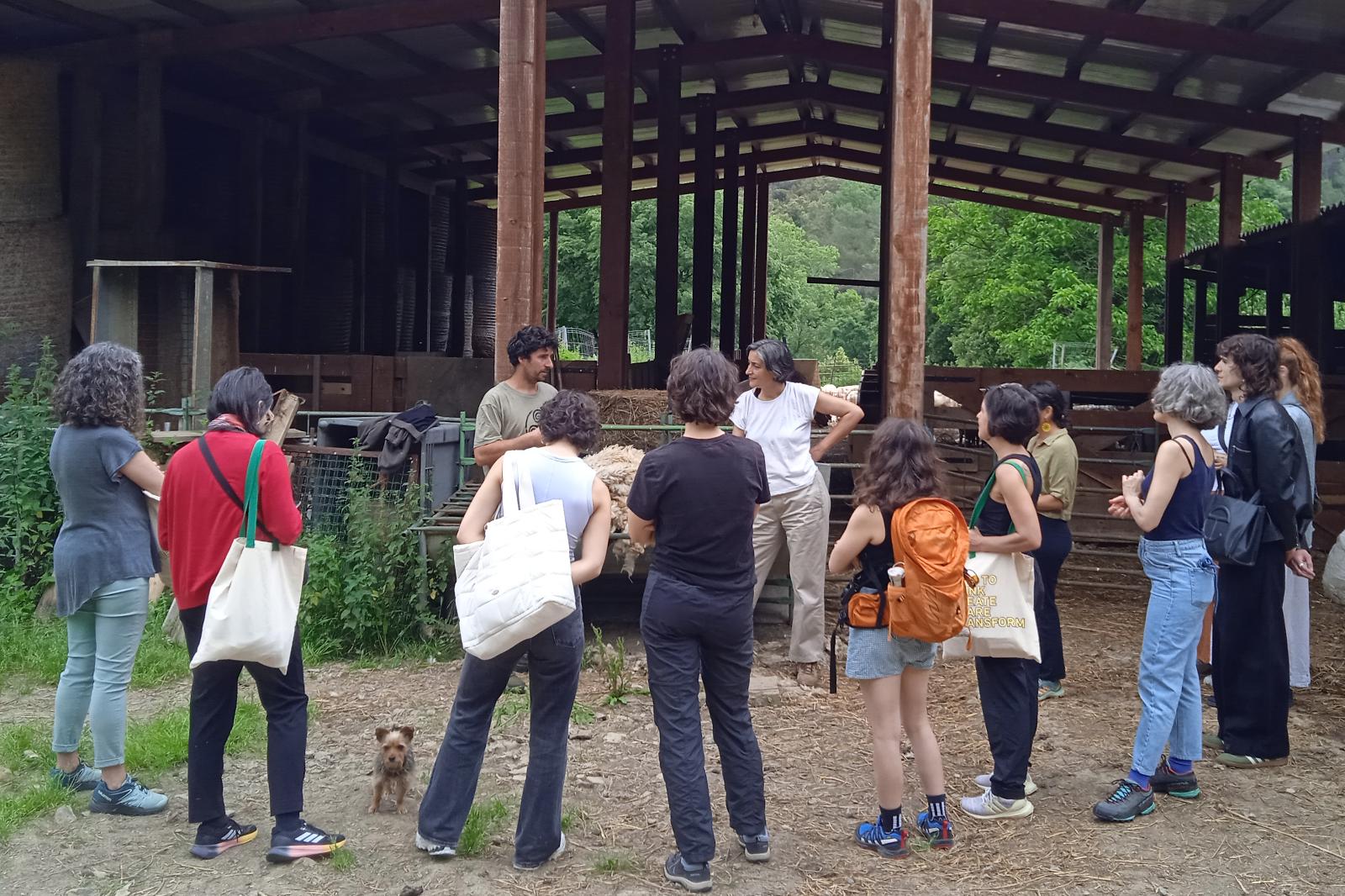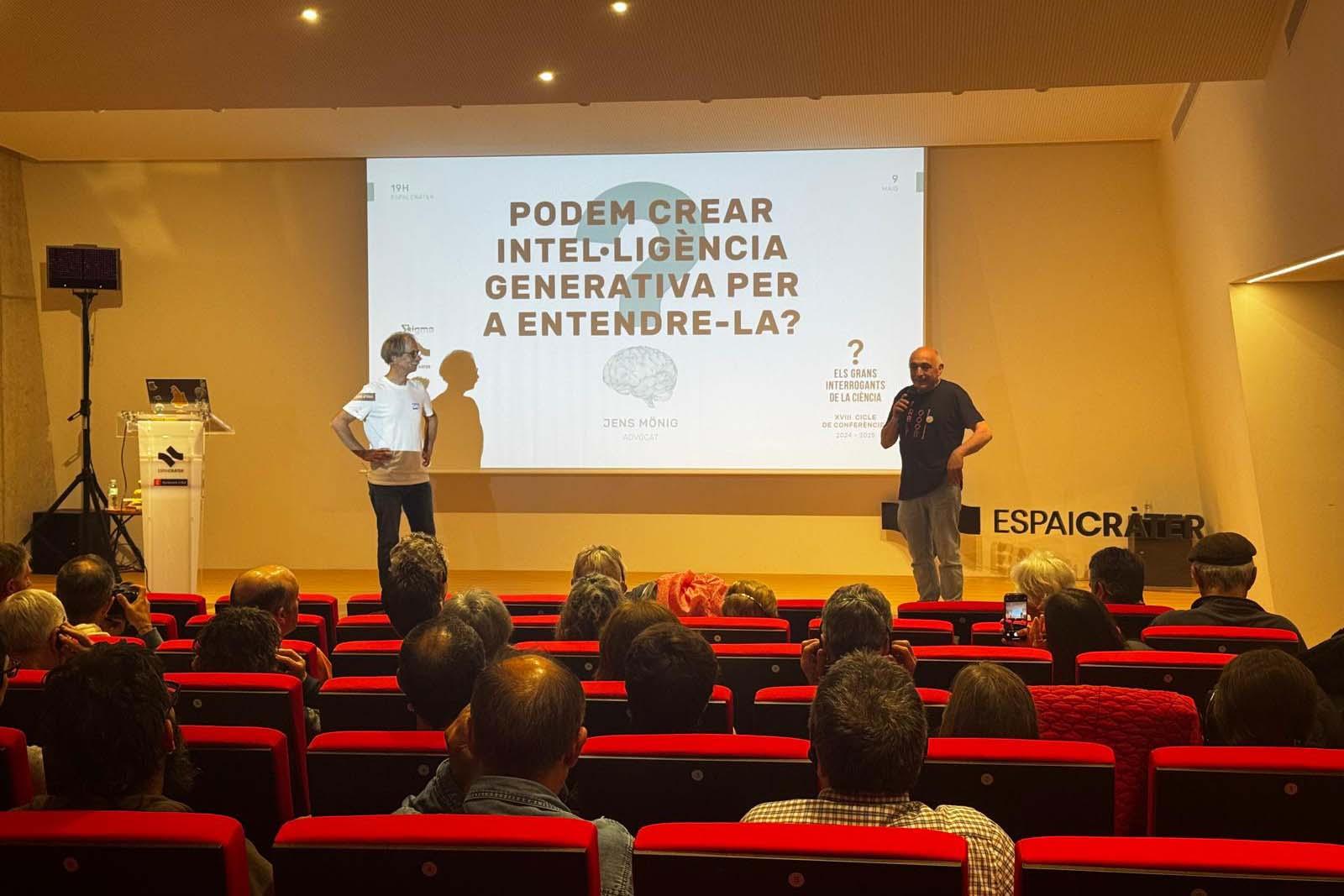Scotland and Journalism, in the limelight during Faber’s last activities
David Manderson & Valèria Gaillard | Olot
Monday, 14 November 2016 , Olot

Scotland and Journalism, in the limelight during Faber’s last activities
While the first group of Faber residents lived through an intense media campaign to present the residency, the second group of residents have particularly focused on offering cultural activities in Olot. This activity by the residents, which is their way of giving back to the society that takes them in, is one of Faber’s defining characteristics. Over the past few days, the writer David Manderson has given a talk at Casal Marià on his perspective on the socio-political and cultural situation in Scotland, while the writer and translator Valèria Gaillard has explained to some twenty students what the work of today’s journalists involved. Both activities are fine examples of the programme of activities that Faber will continue to promote.
The title of the conference by David Manderson—“Scotland, So Near, So Far”—already foretold the unavoidable comparisons between both territories, which are geographically distant but which share so many similarities at the same time. David Manderson contextualised the Scottish process, but its background was more than familiar: the political machinations in favour and against independence, manipulation, foul play, the division and rifts, pensions and pensioners, empty promises, prophetic statements and forecasting of disastrous scenarios in case Scotland splits off, fear, the assertion of national identity traits, etc. And above all, the invaluable role of culture, arts, letters, and humanities in the appearance of the independence movement and the step towards a Scottish referendum. The fact that it was given in English with no simultaneous interpretation attracted a large audience from the Official Language School. David Manderson softened his brogue and used a slightly more British pronunciation to make his speech easier to understand. But this in no way affected his assertions. All told, an image for posterity: that of a Europe which is more sensitive to small nation states, a Europe comprised of melting pot of cultures and languages working for a common and transnational project.
In contrast, Valèria Gaillard, explained to a group of some twenty students at the Institut Bosc de la Coma what the work of today’s journalists consisted in. She described it this way: “They were curious, attentive, friendly and well-behaved… the fourth-year ESO students of the Institut Bosc de la Coma of Olot made it really easy for me—I must admit—to give the talk that I had prepared explaining what the translator and literary journalist’s work consisted in. In fact, among the audience of about twenty people, one girl was thinking about studying Translation and Interpretation, while another, Journalism. Good. It’s true that they were very concerned about whether translators and journalists could make a good living and how it was possible to get into these interesting careers. And to them, it seemed incredible that someone was actually willing to pay other people to do them. True enough. At this point, I told them that, if it had already been difficult for me in my time, they have to be even more versatile and imaginative to make it today. But at the end of the day, it really boils down to luck and perseverance.
The thing is, I tried to make them understand that translation is far from being a mechanical task. And to prove this, I only had to read them an article from a newspaper which had obviously been translated using machine translation, as the sentence structure used was not the right one in Catalan. For all the programs out there, nothing can replace the work of a translator. I warned them about the difficulties of translating idioms, and of the ironies and double meanings of words: ‘How would you translate aquell home anava torrat (a Catalan idiom which means that someone’s drunk) in English?’ ‘That man was toasted?’ ¡That’s not quite right, isn’t it?’ and they immediately understood. Using a French-Catalan dictionary, I drove home the point that a single word could have many possible translations. Now which one to choose? Aha! It’s really not as simple as it seems, and everything only serves to underline the fact that the translator’s work is quite creative—despite being invisible—as a well-translated piece of text should flow as smoothly as if it had been originally written in that language. They also found Javier Calvo’s statement that the translator is the ‘phantom in the book’ very funny.
And at this point, their eyes were like saucers when I tried to explain my difficulties in translating truqueur from French. It’s a word that refers to a young, blackmailing, homosexual prostitute who worked in Paris at the beginning of the 20th century, when homosexuality was forbidden. ‘I had to turn to the great Quim Monzó himself’, I explained—and a murmur went through the entire room—, ‘through Twitter to find a solution, and he suggested xapero, as Catalan did not have an equivalent term for this character’. In a nutshell, it was a fun and intense session, after which, many interesting questions were raised. ‘Have you ever been moved to tears by a text that you were translating?’, ‘Do the publishers rush you to get the translation ready on time?’, ‘What happens when you make a mistake in an article for a newspaper?’, etc. All these questions revealed their lively and voracious intelligence, and who knows? Perhaps one of them will end up in the world of translation and journalism after all!”

